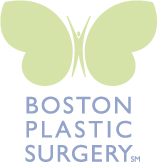Been at the Computer Too Long? Here’s a Quick Stretching Routine for Staying Flexible
Posted on September 24, 2020 | by Boston Plastic Surgery
For health and ease of motion, muscles need to experience regular movement, and that includes stretching. When they aren’t stretched regularly, muscles become shortened and tight and contribute to postural issues. Making stretch breaks a part of your daily routine can help you avoid pain, increase circulation, and maintain overall health.
What Types of Stretches Can I Do at My Desk?
Harvard Health is one trusted source for a regular stretching routine. Urvashi Chogle, a physical therapist at Harvard-affiliated Spaulding Rehabilitation Network, notes that lack of flexibility “can lead to problems like chronic low back pain, neck pain, and poor posture” and advises giving special attention to the shoulders, hips, spine, and knees.
Stretching is a great way to wake up stiff muscles after sitting for long periods at a desk.
You’ll find that once in the habit, you’ll look forward to doing it, and therefore reap the added benefits of reduced stress and a calmer mind.
Here’s a simple summary of Chogle’s recommended set of stretches which can be done while seated in a chair. They can be a great option for stretching at intervals in your workday. Just remember: don’t overstretch and never bounce while stretching. Small, incremental improvements will provide greater benefits without risk of injury.
Harvard Health’s chair stretch series
While this series of stretches is chair-based, Harvard Health reminds patients not to go into stretching “cold” so it’s a good idea to warm up a bit before doing them. Get up and walk a bit—it can be an opportunity to grab a healthy glass of water and hydrate, too!
Side bend: Put your arms above your head, palms together. Bend from the hip towards one side then the other, holding for 5 to 10 seconds on each side. Repeat as desired.
Twist: Cross your arms around your chest and then rotate your shoulders as far as you can go in each direction without discomfort. Hold for 5 to 10 seconds on each side. Repeat as desired.
Forward lean: Sit with your legs extended forward and reach with both hands toward your toes until you feel a stretch. Hold for 5 to 10 seconds and repeat as desired.
If attempting these stretches has you realizing how tight your muscles feel, have patience: it can (and should) take months to lengthen tight muscles. In time, your muscles will respond, and you’ll feel improved flexibility and range of motion.
See Harvard Health’s Plan for Easy Stretching for details as well as a more extensive stretching routine. Another great resource is the Mayo Clinic Guide to Stretches, which features photos of each position.
What About Stretching After Plastic Surgery?
At our Boston-based plastic surgery practice, we encourage patients to prioritize their physical fitness to prepare the body for surgery. Stretching is also essential, both before and after any surgical procedure. At least 6 weeks before your procedure, consider establishing a “pre-hab” routine using the above trusted sources. Another option is online yoga classes, which are available for all levels of skill and flexibility; Boston Yoga Union offers many class options on demand.
After surgery, you’ll need to change up your plan for several weeks. Be sure to closely follow your plastic surgeon’s advice about which stretches are safe along the way to recovery. Most procedures require that you avoid vigorous exercise for a few weeks or longer after surgery, but walking and gentle stretching that doesn’t stretch healing incision sites is beneficial for most patients.
Board certified plastic surgeon Dr. Samaha and team hope these tips on stretching prove helpful. Here’s to your health!
